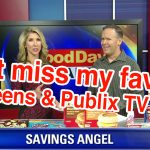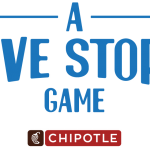How Stores Get you to Spend More Money!
How many times has this happened to you? You pop into the store for a gallon of milk or that one missing recipe ingredient and, before you know it, end up coming out with bags and bags of groceries. How does this happen? As it turns out, stores use a variety of tricks to keep you in the store longer…to get you to spend more money.
Everything is scientifically designed after billions of dollars of sales & lots of marketing research on retailing to do one thing…. Get you and I to part with more money!
Let’s go over some of this science. You’re sure to relate to most if not all of these strategies.
Sounds
You walk in, and your ears hear the sound of music. But this isn’t the jazzy, quick-step type of music. Rather, it’s more the slow and relaxing style. It says, “relax, take your time, browse awhile…. and spend more.” Well, at least it sets the stage for it anyway.
Sights
Next, colorful displays attract your attention. Fruits, vegetables, and flowers right inside the door make a happy welcoming site. Happy shoppers tend to buy more. And that memory will encourage them to come back again.
The right lighting is also important to make fresh produce look its best. Natural light coming in from the entrance make everything appear fresher and more appetizing.
Fragrances
And then there’s the aroma of fresh baked goods, fresh deli, or the fragrance of flowers. Sometimes it’s the relaxing aroma of freshly brewed coffee from an in-store cafe. Whichever it is, make no mistake that the placement of those areas isn’t far inside the door.
Cart size matters
As humans, we like to fill empty spaces. You see an empty corner in your house and you just have to put something there. Shopping carts are no exception. Martin Lindstrom, a marketing consultant, found that customers’ shopping increased by 40% when shopping carts were first doubled in size.
Bargain bins
Who can pass up a bargain bin, right? This must mean that everything in the store is a bargain. Tumblers filled with products that look haphazard must be on clearance! The appearance is that they’re just giving the stuff away!
Cut carton boxes also give the illusion that these prices are so good that they can’t even get them out of the boxes fast enough.
Big “Sale” signs
Before you even know what’s on sale, you’re attracted to big sale signs. The illusion is that whatever it is, it’s a BIG discount! Whether you plan to buy these items or not, the sale signs will pique your curiosity enough to cause you to stop and look. This is one way you go home with items you would never have purchased at full price.
A sale also presents a sense of urgency that says, “if you don’t get it now the price is going to go up”. Or it’s only available for a limited amount of time while supplies last. Either way, you’re left with a decision to get it now or miss out.
Research suggests that the color red has an impact on the viewer as well. People are more likely to notice and react faster to the color red as well as feel empowered by it. When we see red, our automatic instinct is to stop and look.
Pairing items together
Another part of the marketing scheme is to place items that go together in the same area. For example, you’ll find caramel apple dip and apple slicers near the apples. Shortcake cups and strawberry puree near the fresh strawberries. Peanut butter and jelly in the same aisle next to each other. The idea of pairings is well-used in almost every supermarket.
Free food samples
Free samples offered to shoppers encourages you to purchase the product you are sampling. This works in two ways. Firstly, free food makes a happy shopper and a happy shopper is more likely to spend a bit more. Secondly, if somebody gives you something for free, you feel compelled to do something for them – in this case, pick up the product in a nearby display.
End-cap and center aisle displays
It makes sense that sale items would be placed in the center aisles and end caps. And occasionally they are used for overstock on a couple of sale products. But shopper beware! Endcaps and center aisles are more often used to display items that lend themselves to impulse purchases. Or, they are used for the non-sale brand of a product that is on sale.
Changing the store layout
How often do you go to the store and can’t find something because the store changed their layout? This is just another way a store can keep you shopping longer. And the longer you are in the store, the more you’ll spend. You may have to go up and down every aisle just to find the one thing you were looking for (and collect unplanned purchases along the way).
Two things that don’t change, however, is the location of bread and milk. No matter how much is changed in the other aisles, bread and milk will always be at the back of the store and/or in an awkward place to get to.
The checkout lane
You finally reach the checkout lane, you deserve a little treat, right? And you really needed a tube of lip moisturizer anyway. Go ahead, just throw those things on top of the pile.


